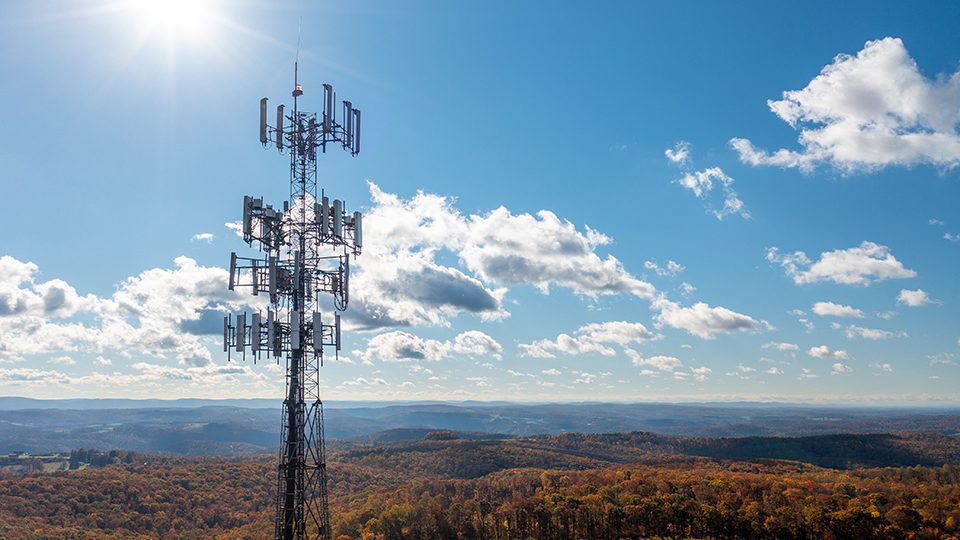The Federal Communications Commission (FCC) plays a fundamental role in developing our communications infrastructure. What does this mean for developers looking to install cellular towers, fiber optic cables, 5G, data centers, and more? Here we’ll address this question and outline the FCC rules to satisfy your project’s cultural resource requirements.
What is the FCC?
The FCC regulates interstate and international radio, television, wire, satellite, and cable communications in the United States and its territories. It works independently of the U.S. Government to protect consumers, promote competition, develop infrastructure, and more.
The FCC faces the pressing issue of installing rural broadband, which would provide 14.5 million citizens with internet access. The federal government aims to close this digital divide by 2030 via the $42.45 billion Broadband Equity Access and Deployment (BEAD) program.
What Practical Role Will the FCC Play in Your Project?
All communication infrastructure projects with a federal nexus have a lead federal agency, often the FCC, to govern the regulatory processes driven by the National Environmental Policy Act (NEPA) and Section 106 of the National Historic Preservation Act (NHPA) of 1966, as amended. This refers to ensuring completion of archaeological, environmental, historic preservation, and tribal reviews in line with Section 106.
On some occasions, the lead federal agency is not the FCC. Other possible agencies for this role may include the U.S. Army Corps of Engineers, the U.S. Forest Service (USFS), the Bureau of Land Management (BLM), the Bonneville Power Administration, and others.
Each of these agencies may ask for unique tasks to be completed. For example, if there is a Traditional Cultural Property (TCP) in the area, the BLM may ask for a viewshed analysis for a cell tower as the TCP may be adversely affected by having the cell tower on a nearby hill. Or, the USFS may ask for a determination of effect because the undertaking will be collocating communications equipment on top of a lookout tower. Both of these tasks may be requested by other agencies, but each agency has its own unique forms and requirements regarding cultural resources that must be addressed.
Regardless of the lead agency, every project must go through the federal review process, satisfying NEPA and Section 106.
Below we break down Forms 620 and 621, two cultural resource requirements you’re likely to encounter on projects involving communications towers.
FCC Forms 620 and 621
Forms 620 and 621 concern potential impacts to historic properties from cell tower developments. The former is for new tower or pole installations, while the latter is for instances of collocation or installation of telecommunications equipment on an existing structure without an extensive ground impact.
Each form has 11 sections covering details such as:
- The consultant information for who completed the archaeology
- Maps of the Area of Potential Effects and details on work being carried out
- Descriptions of the property the tower is being placed on and ground disturbance
- An archaeological assessment
- A list of historic properties within the visual effects radius
- A description of any adversely impacted historic properties
- Details of communication with State Historic Preservation Offices (SHPOs), tribes, and local entities such as historical societies and city planning departments
However, not all historic properties in the radius must be included in these forms. The scope of forms 620 and 621 is limited to properties listed in the National Register of Historic Places (NRHP) or those previously evaluated and determined eligible for listing in the NRHP. As a result, work on cell tower installations can be streamlined considerably.

What is the Difference Between the FCC and State Historic Preservation Offices (SHPOs)?
SHPOs are state-level agencies established under NHPA. It is their job to ensure Section 106 and state-level regulations are followed and cultural resources are protected at the state level. The FCC does not oversee the work of SHPOs.
The FCC guides and controls the consultation process of your communication project to ensure compliance, while SHPOs are the overarching body overseeing the archaeological and historic preservation work for a project in your state.
The FCC is responsible for ensuring consultations for the undertaking are completed and done correctly.
How We Can Help
Our cultural resource work in the communications sector dates back to 2006 and includes dozens of clients across 38 states. With every project, we have gained a deeper understanding of the FCC and how to best help clients on projects involving small cell towers, fiber optic installations, broadband infrastructure, and more.
When you need assistance with your project’s cultural resource permitting and regulatory processes, our regional experts will secure your needed approvals from the FCC quickly and efficiently.
For more information on our communications services, click here. Or to learn more about our work in the broadband industry, click here.

